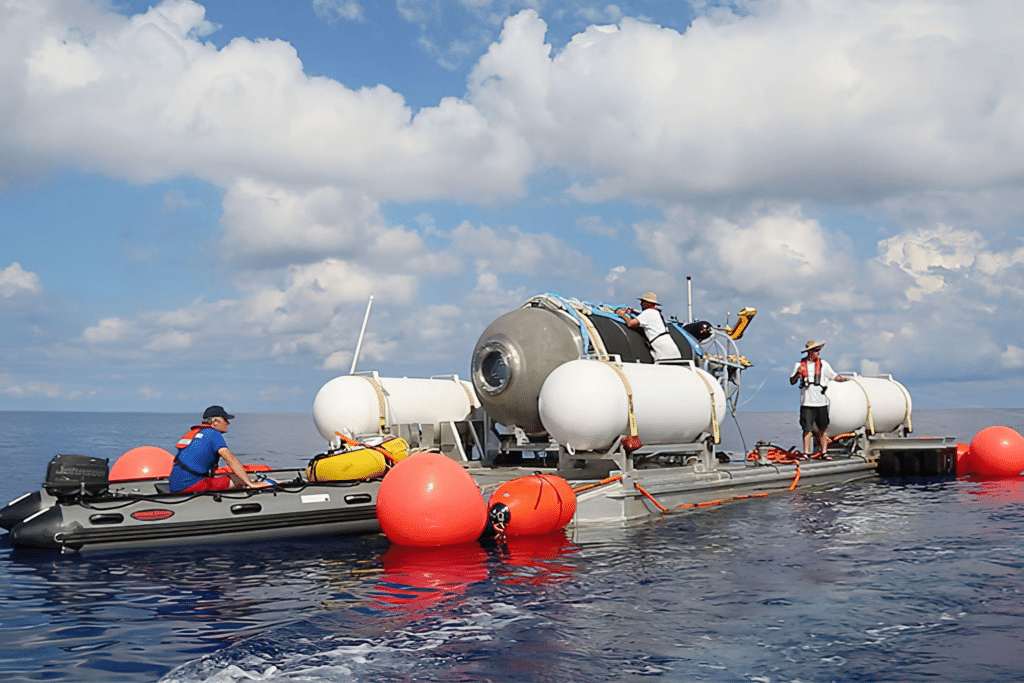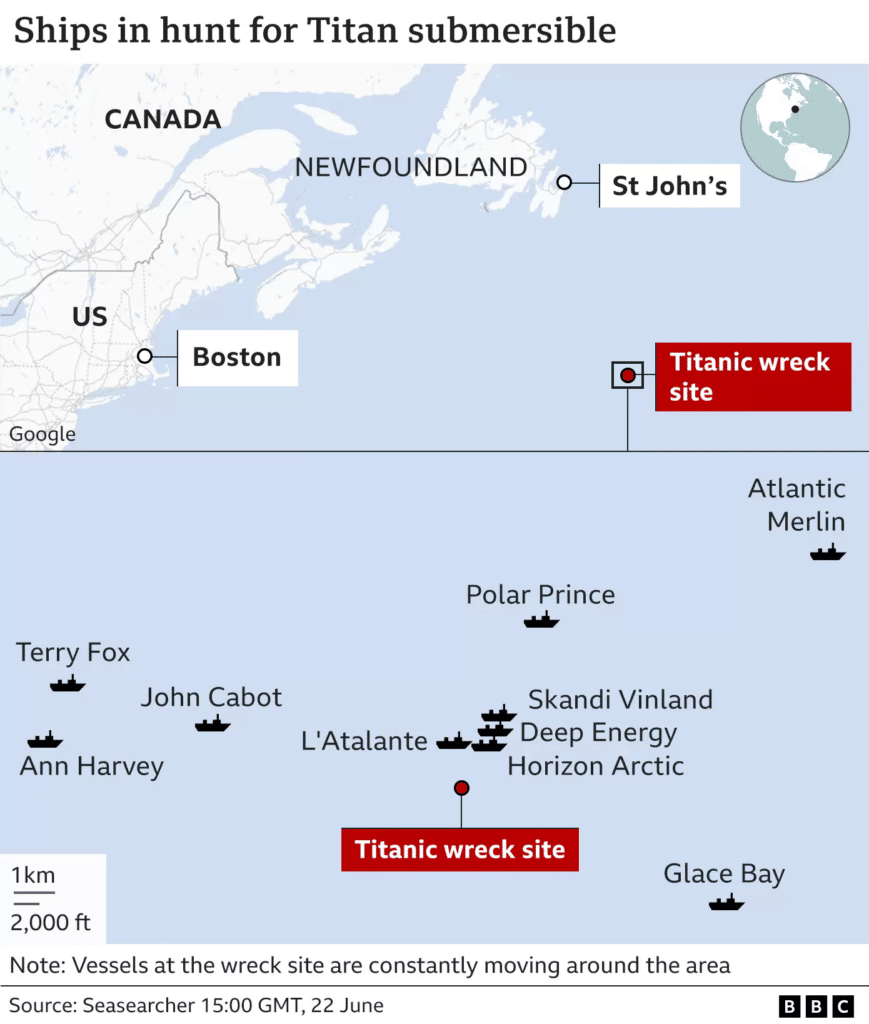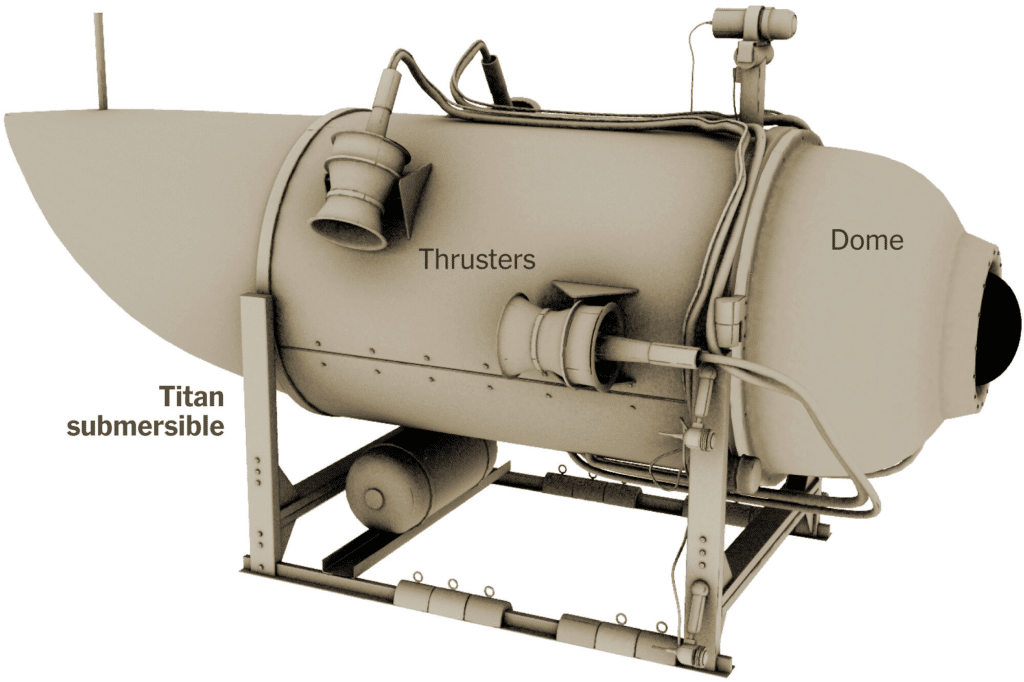Titan Submersible
US authorities have confirmed that OceanGate’s Titan submersible experienced a “catastrophic implosion,” resulting in the instant death of all five passengers on board. The debris field located in the North Atlantic led to this conclusion.
Table of Contents
The US Navy detected sounds consistent with an implosion shortly after the sub lost contact, which occurred during a descent to the Titanic wreck at a depth of 3,800m (12,467ft) below sea level. The cause of the implosion is believed to be the enormous water pressure exerted on the sub’s hull.
Understanding the Implosion:
Implosion refers to the violent collapse of a submarine hull inwards. When a submarine hull collapses, it moves inward at an incredibly high speed, approximately 1,500mph (2,414km/h) or 2,200ft (671m) per second.
SIMILAR: Who is Courtney Thorne-Smith? Everything you need to know
The complete collapse occurs within a millisecond, which is significantly faster than human response time. The high concentration of hydrocarbon vapors inside the sub’s air auto-ignites upon hull collapse, resulting in an explosion. The intense heat incinerates human bodies, reducing them to ash and dust instantaneously.

Determining the Cause:
Experts will now investigate the cause of the implosion by analyzing the debris from the submersible. The focus of the investigation will likely be on the carbon fiber mid-section of the Titan sub.
While deep-sea vehicles typically use robust metals like titanium for their pressure vessels, the OceanGate sub utilized a cylindrical shape with a carbon fiber tube inserted between titanium end caps to accommodate more passengers. Carbon fiber is a strong material commonly used in aerospace and automotive applications.
SIMILAR: Who is Brenda Warner? All About Kurt Warner’s wife
However, the immense pressure at extreme depths, over 300 times the atmosphere at the sea surface, might have exposed flaws in the original fabrication or introduced and exacerbated instabilities during repeated dives.

Investigative Steps:
The investigation will likely explore the practice of non-destructive testing employed during the construction of the submersible. Similar to aircraft inspections, regular and meticulous examinations are performed on aircraft materials to detect potential cracks or layer separation.
In the case of the Titan sub, photographing the debris found on the ocean floor and bringing it back to the surface for analysis in a forensic laboratory will allow engineers to pinpoint the areas where structural integrity was compromised, leading to the catastrophic implosion.
Conclusion:
The investigation into the catastrophic implosion of OceanGate’s Titan submersible will focus on the carbon fiber mid-section and examine the effects of extreme water pressure at great depths.
SIMILAR: Who is Alejandra Quiroz? Everything You Need To Know

By studying the debris and conducting forensic analysis, experts hope to determine the specific cause and identify any weaknesses or instabilities that may have contributed to the tragic event. Non-destructive testing practices and the structural integrity of the submersible will be scrutinized to prevent similar incidents in the future.
Keep on visiting our Website for more updates













